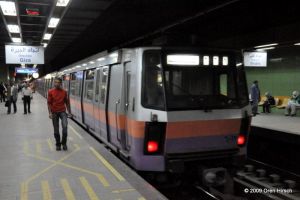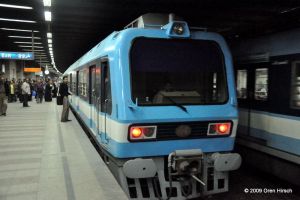
Orion V 2198
Location: Fort Totten Station, Washington, DC
Operator of Vehicle: Washington Metropolitan Area Transit Authority
Date of Photo: June 17, 2009
Since 1992, the Orion V has been part of WMATA’s bus fleet. In a matter of weeks or even days, depending on what you hear, that will no longer be the case. The last of Metro’s Orion Vs, which have been in service for over 16 years, are expected to be retired in the very near future, though a few will hang on in the agency’s “reserve fleet.” These buses have operated from every division at one time or another and made up the bulk of the fleet for much of their service lives. Their 1992 counterparts were retired a few years ago, and the last of their 1997 counterparts were retired earlier this year. They outlived their “siblings”, the 1999 30 foot Orion Vs, which ultimately finished their days with Ride On in 2014. They also remained in service longer than their younger “cousins”, the Orion VIs that WMATA ordered in 2000 but withdrew from service in 2012 following a series of engine fires on board the buses.
WMATA was not the only Orion V operator in the region. Ride On‘s last Orion Vs (from 1999 and 2001-2002) have clung on to life by serving some of the Red Line SafeTrack shuttles, but they have not been used in regular revenue service since earlier this year. DASH and Fairfax Connector operated the Orion V as well.
While the Orion VII remains in service at all of these agencies, Orion was bought by New Flyer in 2013, and production of Orion buses was ceased shortly thereafter. In the same way that the Orions displaced Flxible as the dominant bus in WMATA’s fleet, New Flyer has done the same to WMATA’s Orions. As the DC region’s Orion VIIs reach the end of their service lives in the coming years, the Orion chapter of DC transit history will come to an end.
For more photos of WMATA’s 2000 Orion Vs, please click here.





